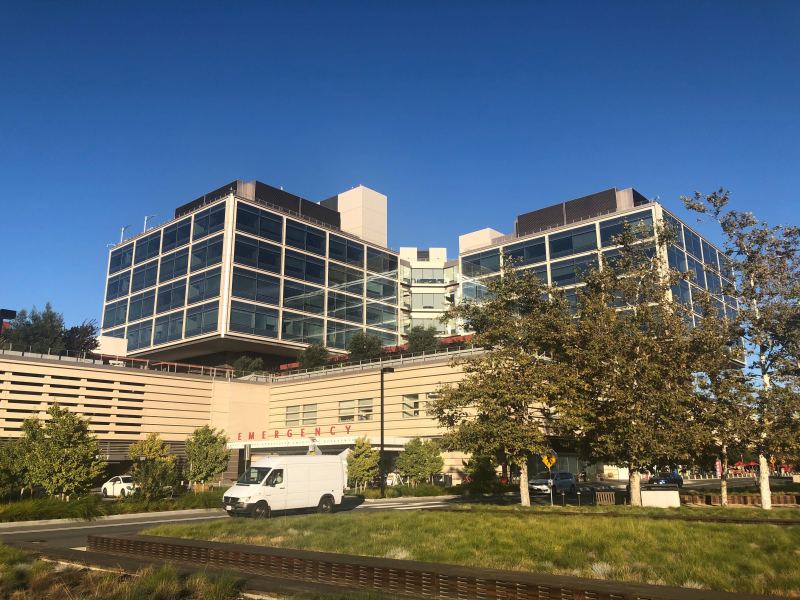Stanford Medicine researchers found that two-thirds of incarcerated residents in California who were offered a COVID-19 vaccine accepted at least one dose, an encouraging sign that other jails and prisons nationwide can offer the same protection for their vulnerable carceral populations.
The May 12 study, a part of the Stanford-CIDE Coronavirus Simulation Model team, examined both how the vaccine was rolled out in incarcerated populations and how many individuals chose to get the vaccine. The research started last December, when vaccinations began, with data collection cutting off in March of this year.
California prisons have rapidly rolled out the vaccines and achieved high uptake, the study showed. Two-thirds of 97,779 incarcerated residents were offered a vaccine dose, and 66.5% of them accepted at least one. There were especially high vaccine acceptance rates — nearly 80% — among the most medically vulnerable incarcerated residents, similar to rates seen in long-term care facilities.
In total, 75% of incarcerated people in California have received at least one dose, compared to 53.4% in the general population statewide. The rates in prisons are significantly lower nationwide: half of incarcerated populations have received the vaccine, compared to approximately half the general adult population.
The vaccines are instrumental in protecting one of the most impacted populations from COVID-19. As the second largest state prison system in the U.S., California has seen nearly half of its incarcerated population — about 49,000 people — become infected with COVID-19 in the past year, with death rates that are more than twice as high as the general population.
“What this study shows is what’s possible,” lead author and fourth-year biomedical data science Ph.D. student Elizabeth Chin said.
Nearly half of those who initially declined vaccination ended up accepting it after a subsequent re-offer, an indication that vaccine hesitancy isn’t necessarily fixed. Re-offers can also be leveraged to help reduce disparities in vaccination rates, especially as efforts are being made to build vaccine confidence within certain minority groups.
“I think that underscores the importance of consistently offering vaccinations, and that the path to acceptance is not a binary indicator of yes or no, whether you’ll take it or you won’t,” Chin said.
The researchers found that vaccine acceptance rates were highest among Hispanic and white incarcerated people, at about 72.6% and 72.1% respectively, and lowest among Black incarcerated people at 54.9%.
“This is a finding that is fairly common in studies on health treatment, acceptance and uptake in prison settings and in the general community, and the standard explanation is that there is a high level of mistrust in this racial group,” said professor of medicine and law and study co-author David Studdert, citing the historically inappropriate and unethical medical experiments done on both minority and prison populations. The distrust created from these events has endured to this day, Studdert added.
Both Chin and assistant professor of epidemiology and population health Lisa Goldman Rosas agreed that these results emphasize that more work is needed to build confidence and trust for Black residents through vaccine education.
Beyond vaccine trust, the research suggests that other barriers may also be at play. The study’s high rate of vaccinations among Hispanic incarcerated residents contrasts with lower nationwide rates for the same group. Studdert said lower rates in general Hispanic communities may have less to do with reluctance about vaccinations and more to do with access barriers.
Despite this, the study demonstrated encouraging results that brisk, high vaccine uptake is attainable in carceral settings, a crucial step towards protecting vulnerable prison populations in settings where safety measures like social distancing are difficult to implement.
“People living in congregate settings, such as in prisons, are at high risk of infectious diseases such as COVID-19, and significant resources should be dedicated to all prevention measures, including vaccinations,” Goldman Rosas wrote.
When vaccines became available, California was one of several states to prioritize incarcerated populations in its vaccine rollout and has now vaccinated more of its prison residents than all but two other states.
Chin and Studdert hope that their group’s research will send a message to other state and federal prisons across the country that expanding access and acceptance of vaccines in prisons can — and should — be done.
“There are nearly 2 million incarcerated people in this country, and they represent one of the highest risk settings for COVID-19,” Chin said. “Achieving high vaccine coverage will reduce the risk of an extremely vulnerable population.”
This article has been updated to reflect more recent data regarding nationwide vaccination rates in prisons.
